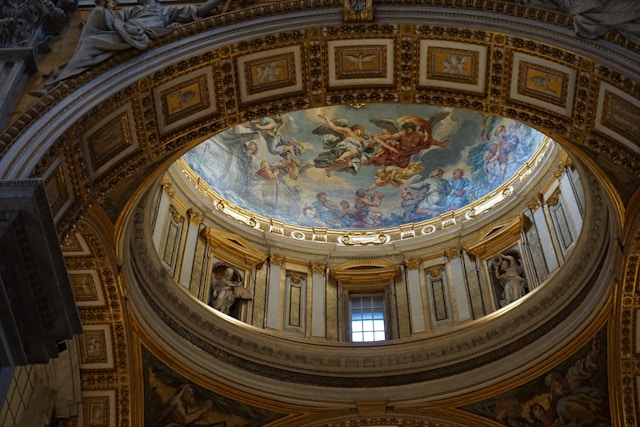Your cart is currently empty!
Exploring the Holy Trinity Church: A Journey Through History, Architecture, and Significance

Introduction
The Holy Trinity Church holds a significant place in the realm of Christianity, not only as a sacred place of worship but also as a testament to centuries-old artistry and architectural prowess. This comprehensive blog post will delve into the rich history, intricate architecture, and profound meaning of the Holy Trinity Church, offering insights into its enduring legacy.
Historical Significance
Foundation and Development
- The Holy Trinity Church traces its origins to the 4th century, established during the reign of Constantine the Great.
- It underwent several renovations and expansions over the centuries, reflecting the changing political and religious landscape.
- Following the Norman Conquest in 1066, the church was rebuilt in the Norman style, which remains visible in parts of today’s structure.
Key Historical Events
- The church witnessed significant events throughout its history, including coronations, royal weddings, and religious ceremonies.
- In the 13th century, King Henry III rebuilt the chancel and added the Lady Chapel, creating an exquisite space for worship.
- The church played a central role in the English Reformation, with Henry VIII breaking ties with the Roman Catholic Church.
Architectural Splendor
Exterior Design
- The Holy Trinity Church is renowned for its striking exterior, characterized by its grand facade and intricate stonework.
- The western front features elaborate carvings, including statues of saints and biblical scenes.
- The nave and aisles are adorned with flying buttresses, providing both structural support and visual interest.
Interior Grandeur
- The church’s interior is equally impressive, showcasing a blend of architectural styles and ornate details.
- The nave, the main body of the church, is vast and airy, with high vaulted ceilings.
- The chancel, the area around the altar, is separated by a magnificent rood screen, featuring intricate carvings and elaborate tracery.
- The Lady Chapel, located at the east end, is a serene space with stained glass windows depicting biblical narratives.
Sacred Meaning and Symbolism
The Holy Trinity
The Holy Trinity Church derives its name from the Christian doctrine of the Trinity.
- It is believed that God exists in three persons: the Father, the Son (Jesus Christ), and the Holy Spirit.
- The church serves as a physical representation of this divine unity, with the nave representing the Father, the chancel the Son, and the Lady Chapel the Holy Spirit.
Other Symbolic Elements
- Baptismal Font: The font, where baptisms take place, symbolizes the purification of sins.
- Stained Glass Windows: The colorful windows depict biblical stories and serve as a teaching tool for worshippers.
- Altar: The altar, the central focus of the church, represents the sacrifice of Christ and the communion between God and his people.
Contribution to Art and Culture
The Holy Trinity Church has played a pivotal role in shaping British art and culture.
- Music: The church has been home to renowned choirs and organists, contributing to the rich tradition of sacred music.
- Painting: Some of the interior walls feature medieval paintings, offering glimpses into the artistic styles of the time.
- Literature: The church has served as a setting for literary works, including Chaucer’s “Canterbury Tales.”
Visiting the Holy Trinity Church
Location and Access
- Address: Holy Trinity Church, Stratford-upon-Avon, England
- Access: The church is open to the public for worship, guided tours, and private visits.
- Guided Tours: Visitors can book guided tours to explore the church’s history, architecture, and sacred significance.
Tips for Visitors
- Dress Code: Respectful attire is recommended when visiting the church.
- Photography: Photography is allowed in most areas, but visitors are asked to be mindful of those engaged in worship.
- Accessibility: The church is wheelchair accessible, and assistive listening devices are available.
- Respectful Conduct: Visitors are reminded to maintain a respectful demeanor while in the church.
Conclusion
The Holy Trinity Church stands as a testament to the enduring power of faith, the ingenuity of human artistry, and the profound impact of spiritual beliefs on society. Its historical significance, architectural splendor, and sacred meaning have captivated generations of worshippers and visitors alike.
Whether embarking on a pilgrimage or simply seeking cultural enrichment, the Holy Trinity Church offers a glimpse into the rich tapestry of human history, artistry, and faith.